Corrida is the most
Spanish custom which fascinates and shocks people all over the world. I will try to present both sides of the spectacle.
Corrida de torros or la fiesta takes place in Spain, Portugal, southern France, Mexico, Colombia, Peru, Venezuela and Philippines.
Bulls before fighting have an extremely good life. They spend their time grazing on the meadows, everybody takes care about them and gives them whatever they need. For C
orrida's followers it is an honor for a bull to die on the arena with applause of the spectators. They treat it as an art which connects in one perfect piece of music, dancing, horse riding and amazing costumes.

Opponents of bullfighting talk about animals rights, barbaric blood sport and torturous death. In many countries people vote against this kind of entertainment. In Spain in two provinces: Catalonia and Basque Country it is forbidden to organize it.
Spanish Corrida
Bulls are about four or six years old. There are three
matadors and everyone fights with two bulls. Matadores are assisted by two picadores, three toreros and a
mozo de espadas.
Picadores ride on a horseback with a lance. Horses are also protected by padded cover to prevent death by bleeding. Anyway many of these beautiful animals had died during bullfighting.
The
toreros irritate the bull by yellow- pink
capa (sheet). Next, one of the picador on the horseback hits his lanca into the bull's neck as well. Also
banderilleros try to
stick short lancas (banderilleros) into the bull's neck. The Lancas have colorful ribbons which have to annoy bulls as well. After that when animal is weaker and his head is lower the matador comes. He has a red muleta and tries to make the bull tired. When animal is exhausted, he sticks lanca into his spinal cord. If matador kills the bull by first time, the audience will admire him with an applause. If he does not kill it he will try again.


Muleta
And this is over.
Bull is dead. Matador can cut an ear of the bull. If the performance was fantastic the audience let matador cut other ear. Sometimes a tail.
The dead bull is covered by sheets and moved by horses and mules.
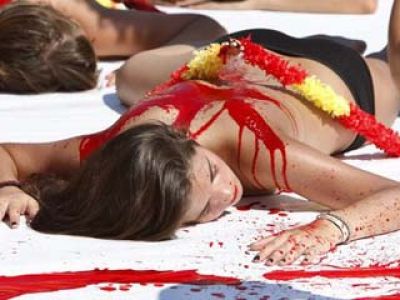
Corrida's opponents picture
The largest
Corrida takes place in
Mexico City on the Plaza Mexico. The oldest one in Sevilla in Spain on the La Maestranza (from 1765).

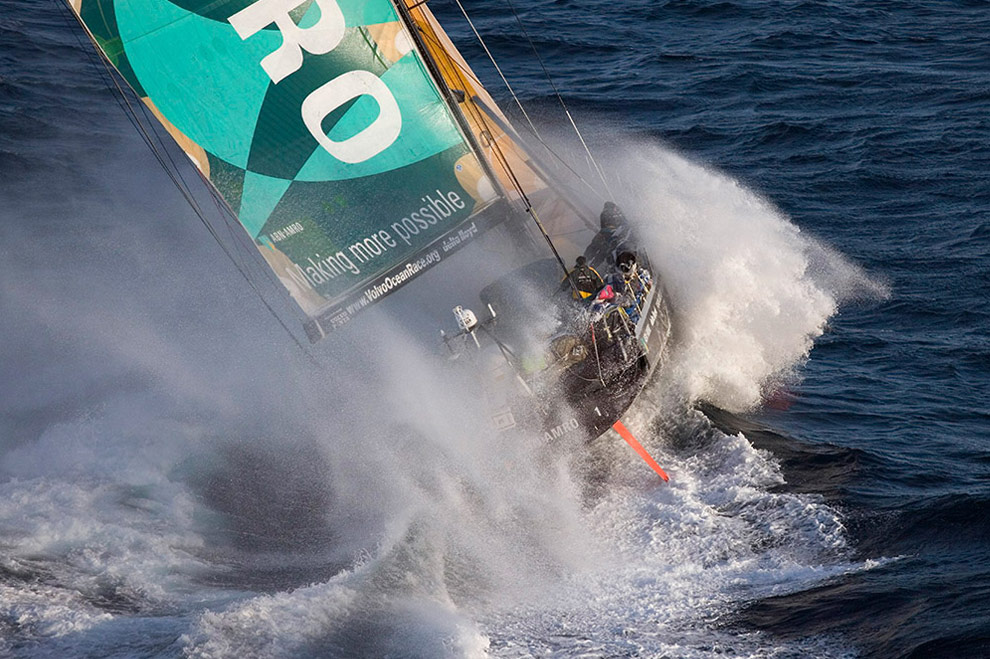 Only for brave people
Only for brave people
 Encierro
Encierro Nowadays you can get there by lift (from the Postiguet) or by walk. There is a wonderful park (Parque de la Ereta) with olive trees.
Nowadays you can get there by lift (from the Postiguet) or by walk. There is a wonderful park (Parque de la Ereta) with olive trees.




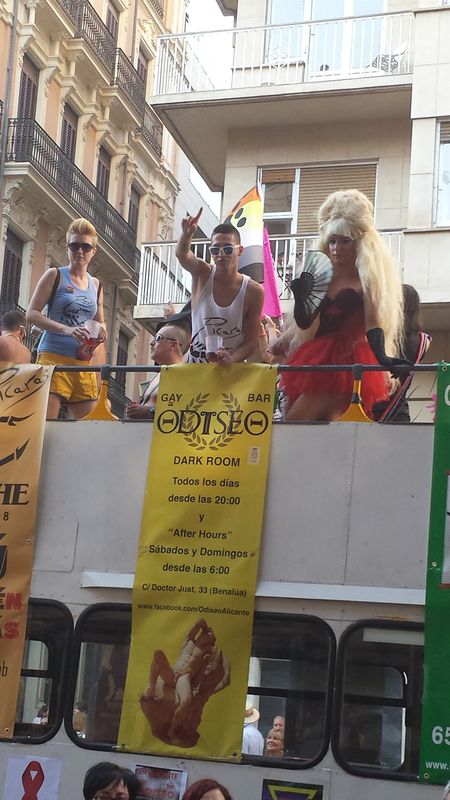
 The island's waters are officially declared a Mediterranean Marine Reserve for their excellent quality and for the biodiversity of their flora and fauna.
The island's waters are officially declared a Mediterranean Marine Reserve for their excellent quality and for the biodiversity of their flora and fauna. You can enjoy there palm trees, crystal water, beaches and coves.
You can enjoy there palm trees, crystal water, beaches and coves. 


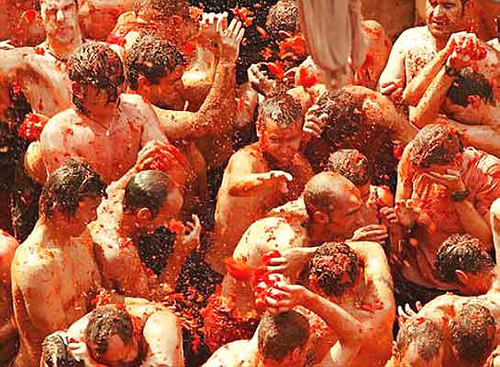 Tradition of la Tomatina was born in 1945. Young Spaniards came to see parade of gigantes and cabezudos. During this festival they took tomatoes from stands and started to fight for fun. Police had to intervene. Many people were imprisoned for a short time. Next year they brought tomato and started fighting again.
Tradition of la Tomatina was born in 1945. Young Spaniards came to see parade of gigantes and cabezudos. During this festival they took tomatoes from stands and started to fight for fun. Police had to intervene. Many people were imprisoned for a short time. Next year they brought tomato and started fighting again.  Palo jamón
Palo jamón





 Gazpacho from Andalusia
Gazpacho from Andalusia





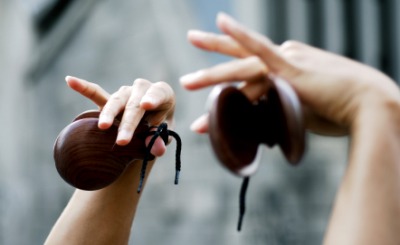 Castanets
Castanets Spain
Spain

 Tapas
Tapas

 Muleta
Muleta 







